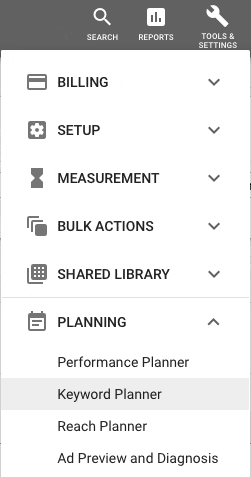What is Digital Marketing?
For TechTiger, digital marketing is all about empowerment. Through consultation and collaboration, we like to encourage our clients to develop a strong understanding of how to better market their business online.
A needs analysis is the first step, from there, it’s a matter of breaking down the Digital Marketing landscape in order to identify which components will work best.
What does Digital Marketing entail?
We’ve broken digital marketing down into these main components:
- Search engine optimisation (SEO)
- Search engine marketing (SEM) / Pay-per-click advertising (PPC)
- Content marketing
- Social Media Marketing (SMM)
- Email marketing
- Web design
- and if needed, app design
Digital marketing even has implications for “so called” offline marketing including radio, television, phone and print media. Read on to read some tips on how healthy digital marketing habits can help you achieve a sweet spot.
Part 1: Search Engine Optimisation (SEO)
WordPress users alone publish 2 million blog posts per day world-wide. This post is a classic example of the many pieces of content authored by a pro-active webmaster.
And with 93% of digital experiences beginning with a search engine, it pays dividends to be found on the first page of Google.
View this post on Instagram
White hat SEO vs black hat SEO
SEO is split into two categories. White hat and black hat. TechTiger believe in playing the long game by helping business generate rankings that outlast Google’s core updates. Black hat SEO techniques might get you some quick results, but can ultimately result in relegation to page 20 of Google, or even a lengthy ban from Google after a core update.
Black hat SEO involves keyword stuffing, duplicate content, invisible text, links from sites with non-relevant content and so on. TechTiger once handed over the keys to the house (provided a client with their WordPress logins) only to discover they had keyword stuffed their site and put grey text on a grey background (invisible text). The subsequent slide in rankings was a pretty horrible situation for that business owner who wanted to get a quick fix and ended up achieving the opposite…
White hat SEO is a sustainable approach to making sure your website is always seen. By providing the best content possible, Google will see that you’re thinking of the human audience, and as a result your site will kick more goals in the long term.
What is on page SEO?
On page SEO is the process of adding your target keywords and content to the most important parts of your website; the parts that search engines look at first. There are three main categories of on page SEO, these are content, keyword selection and HTML.
Content
In 1996, Bill Gates made the prediction that “Content is king.” This is super accurate in 2019. Reason being, a search engine user is the most happy when they find a result that serves their needs in the best way possible.
For a business wanting to enhance their SEO, the first step to begin producing quality content.
A great piece of content educates the end user, once again, this blog post is a good example. Furthermore, the content must be original. If you’re a blogger, TechTiger recommends composing cornerstone pieces that are no less than 1,000 words per article. Brainstorm some ideas and make sure you include some significant content length, breadth and depth, while adding in some infographics, images, video and audio.
Keyword selection
Accurate keyword research is crucial to the success of your SEO campaign. Keyword research is also crucial for producing quality content. Your keyword should be included in your content headline and throughout your article. Keyword research can be carried out using Google Ads Keyword Planner:

For example, TechTiger client First National Real Estate | Druitt & Shead chose the following keywords for their Property Management and Property Sales landing pages given their relevance:
- property managers perth
- real estate agent perth
- sell my house perth
- sell my place perth
- sell my property perth
- real estate agents doubleview wa
- real estate agents scarborough wa
- city beach real estate agents
- real estate agents northern suburbs
But make sure you don’t stuff your keywords into your content. Keyword density should be kept below 1% and make sure you put your focus on educating the reader and not stuffing your keywords into your content.
The keywords you choose for your optimisation campaign should tell a user what your site is about. Keyword selection is crucial because user intent needs to be taken into consideration. Using Druitt & Shead as an example once again, a keyword such as “real estate Doubleview” would attract a searcher looking for a property in Doubleview, whereas the keyword “real estate agent Doubleview” would attract a searcher looking for an agent to sell their property. This is a crucial step and not to be underestimated.
Competition also needs to be taken into consideration when selecting keywords. Google Ads Keyword Planner also helps you determine the competition for a keyword. A big mistake is ignoring this statistic. Opting for keywords with low/medium competition is the best way to commence an SEO strategy. Aiming for the low hanging fruit is the best initial approach. Keywords with the most amount of searches might be a temptation, but make sure competition isn’t too high. Optimising for a high competition keyword may result in your site never being seen.
Long-tail keywords are highly recommended. In Druitt & Shead’s case, they are better off optimising their website for “best real estate agent Perth” because it’s easier to rank for a long-tail keyword than it is a broader keyword. Long-tail keywords also typically have lower competition. In the long run though, you may find that your site begins to rank for certain chunks of that long-tail keyword. e.g. “best real estate agent”, “real estate agent Perth”, “real estate agent”, “best real estate”.
HTML
HTML stands for Hypertext Markup Language and is the code that holds a website together. When search engines crawl a website, they want to see your target keyword in the most important sections of the website HTML. Below are examples using Druitt & Shead as our case study, once again:
- URL: e.g. https://www.bestrealestateagentperth.com/ or
https://www.website.com.au/best-real-estate-agent-perth/ - Page title: e.g.
<title>Best Real Estate Agent Perth | First National Real Estate | Druitt & Shead</title> - Meta description tag: e.g. <meta name=”description” content=”First National Real Estate | Druitt & Shead. Professional real estate services since 1972. The best real estate agent Perth buyers and sellers can turn to.”/>
- Main heading tag: e.g. <h1>We Are the Best Real Estate Agent Perth Has to Offer</h1>
- Image alt tags: e.g. alt=“An image of the Druitt & Shead logo. Best Real Estate Agent Perth”. Alt tags are used to describe the topic of an image for blind people who use screen readers to browse the web.
- In your written content at a density of around 1% as previously explained.
Further on page SEO elements that search engines take into consideration include:
- Internal page links
- Including breadcrumbs
- The target keyword appearing in the first paragraph of copy
- Speed of website load
- Including smaller image file size and if the images are served via a CDN (content delivery network)
- Social share buttons
- Multimedia such as video/audio
- Duration of session and bounce rate is another ranking metric. Short visits and quick exists without the user clicking on any of your website internal links can cause search engines to downgrade your rankings.
- Content formatting including:
- Subheadings containing the target keyword or keywords similar to the target keyword
- Lists like the one you’re reading right now
- Logical and carefully planned website architecture
- Google needs to find it easy to crawl the site and nicely organised information can help
- Using https:// instead of http://
- Website security is now considered a ranking factor
- Responsive design – one single codebase that handles the resizing of website elements for desktop, laptop, tablet and smartphone
What is off page SEO?
The utopia is for the content you produce to be as “linkable” or “shareable” as possible. In a perfect world, your content would be so awesome that your blog posts and multimedia are shared virally on social media and industry related blogs, all over the internet, all over the world. Again, this would happen in a perfect world.
Link building
Manual link building and submission takes place to simulate the sharing process outlined above. This is a way of increasing your website’s authority as a credible source of information. Even though Google has made thousands of changes to its algorithm over the years (even denounced unnatural link building), backlinks remain a key ranking signal.
The focus should be on quality backlinks, not quantity! A single quality backlink can be more powerful than 1,000 low-quality backlinks. Domain authority and page authority come into play here, as does…
Domain name age
Domain trust and age play an important role when a search engine ranks a website. A 19 year old domain name should typically rank higher in Google than a domain name that is 3 months old.
More content coming soon
We’ve broken down what SEO means for digital marketing. Stay tuned in future months for information on how the following impact digital marketing:
- Search engine marketing (SEM) / Pay-per-click advertising (PPC)
- Content marketing
- Social Media Marketing (SMM)
- Email marketing
- Web design
- App design
Watch this space. 🙂


